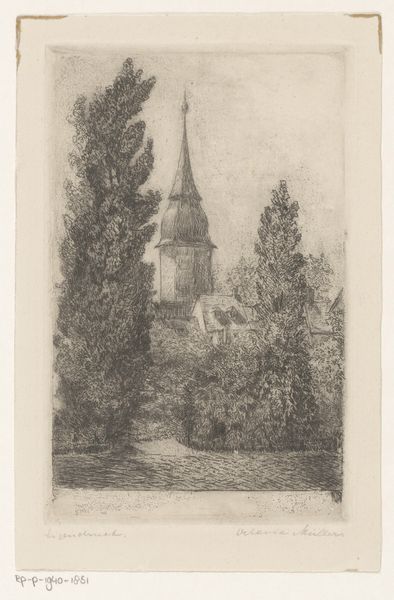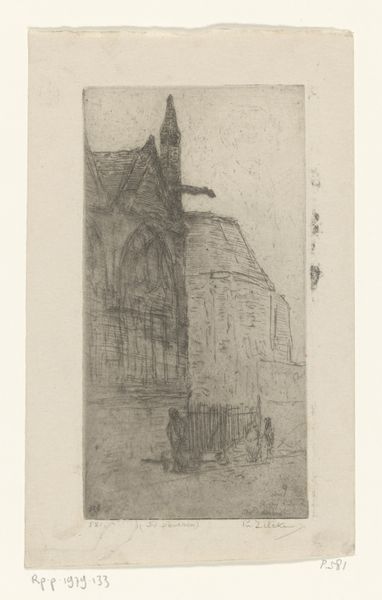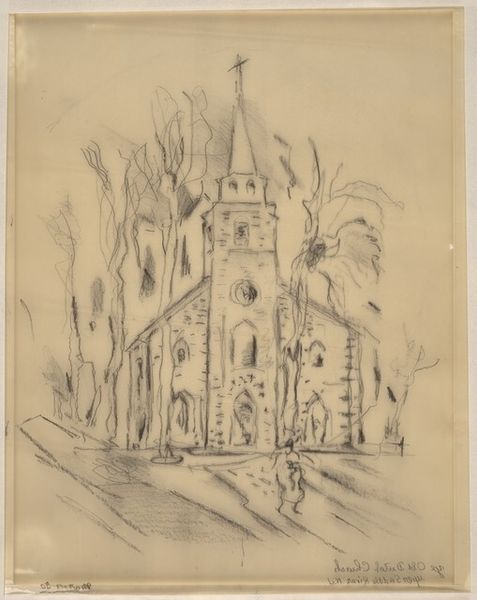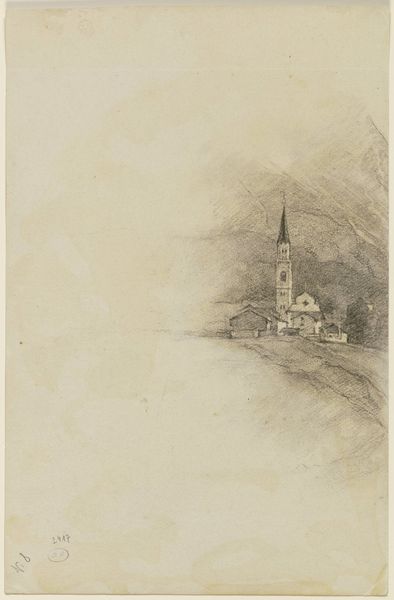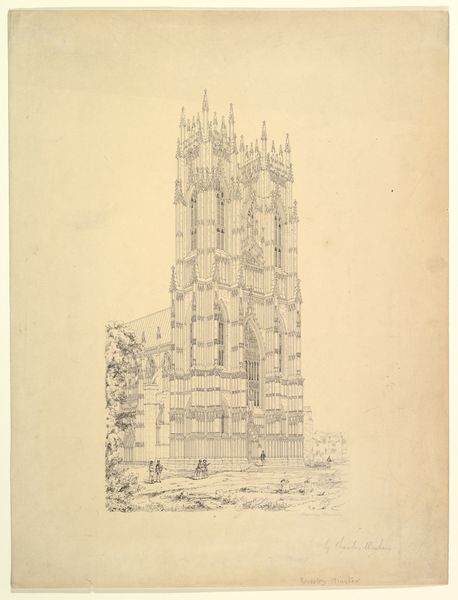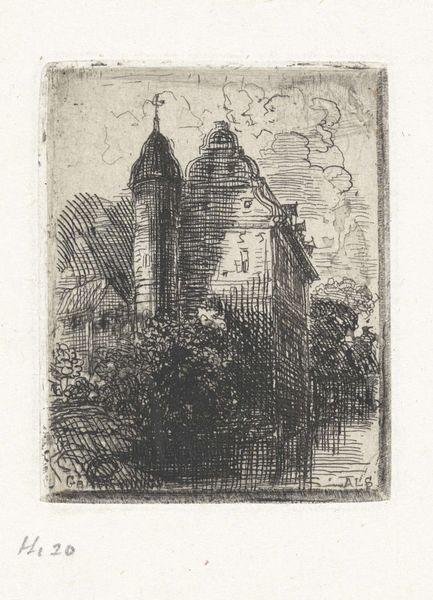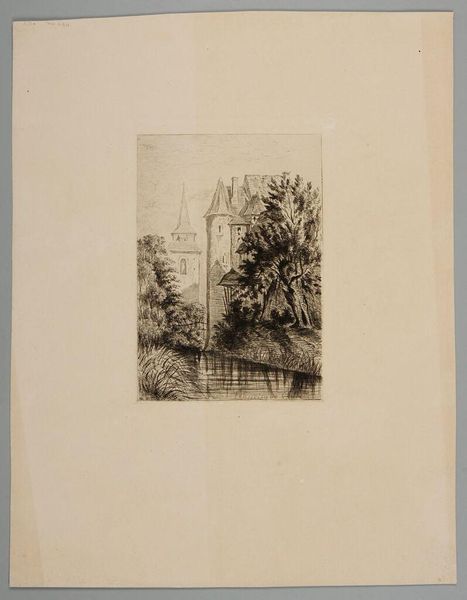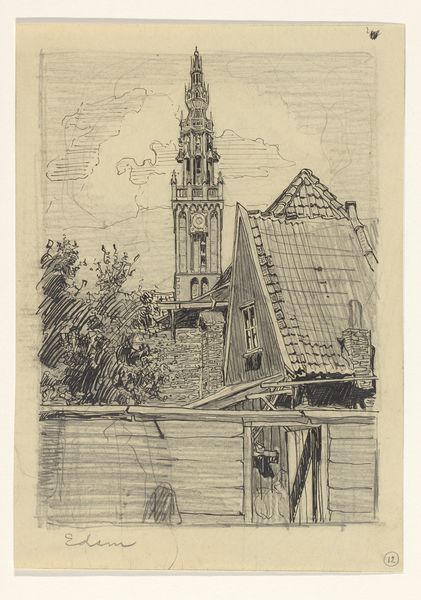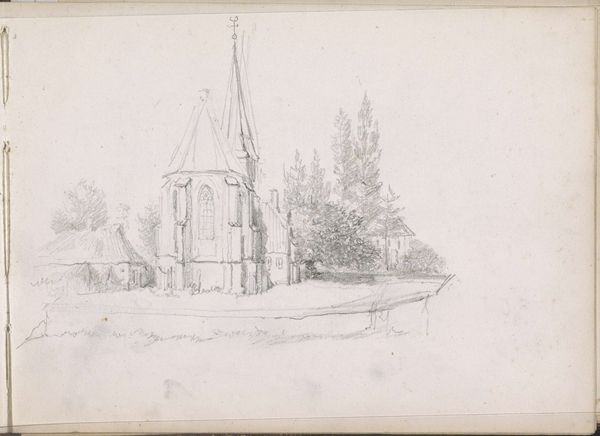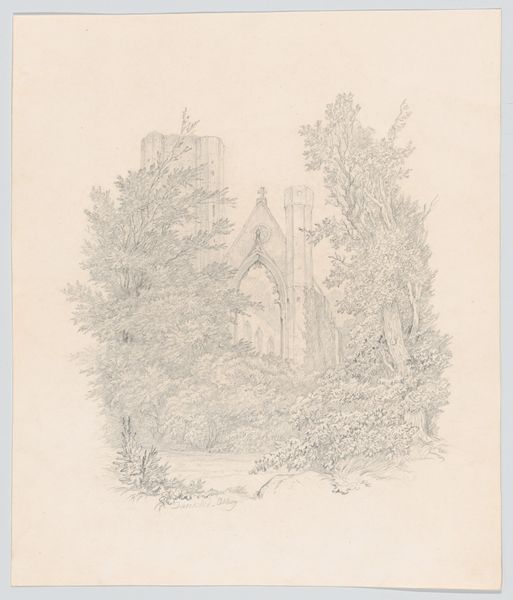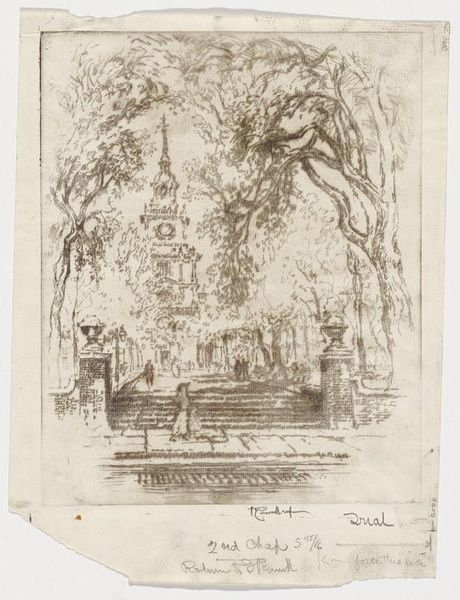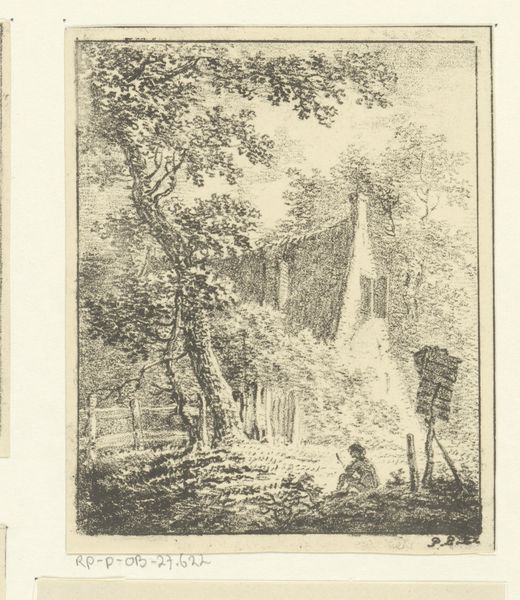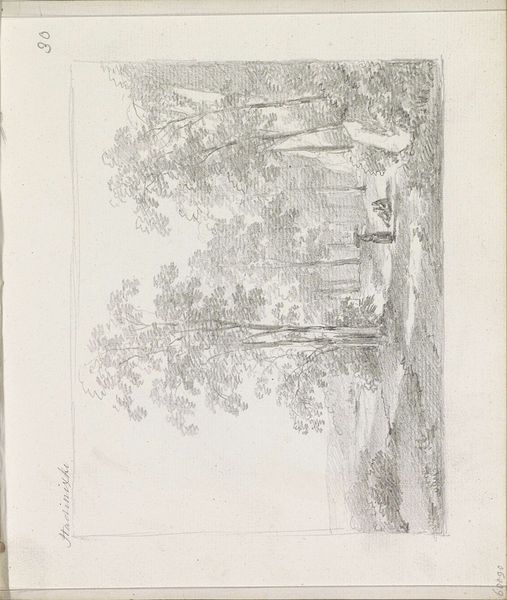
print, etching
#
medieval
# print
#
etching
#
landscape
#
etching
#
geometric
#
line
#
cityscape
#
history-painting
Dimensions: 9 7/8 x 7 15/16 in. (25.08 x 20.16 cm) (plate)11 7/8 x 9 5/16 in. (30.16 x 23.65 cm) (sheet)
Copyright: No Copyright - United States
Curator: Let’s consider Joseph Pennell’s etching from 1920, titled "The Spire," currently held here at the Minneapolis Institute of Art. Pennell masterfully uses the etching technique to render this architectural subject. Editor: It's immediately evocative, isn't it? Somber, almost melancholic. The dark, muted tones against the stark spire lend a palpable air of stillness. Curator: That somber quality feels entirely deliberate. The composition subtly emphasizes a kind of structural patriarchy through the towering spire. We must ask who had the power to commission and build such structures. Who was excluded from those hallowed spaces? Editor: The spire itself, though – a clear, almost aggressive thrust skyward. Symbolically, it signifies ascension, aspiration. In iconography, spires have often been visual testaments to religious faith, ambition reaching towards the divine. What histories are interwoven with these architectural expressions? Curator: Certainly, the iconography of the spire points towards ambition. But the socio-political narrative is more nuanced. Considering the timeframe—1920, post-war—we might see the spire less as pure aspiration and more as a visual symbol of the establishment asserting itself after global trauma. The geometric sharpness feels almost authoritarian. Editor: I see your point about the spire functioning as a kind of visual declaration of power. But look closer – Pennell has surrounded it with natural forms: trees, a graveyard, nature subtly reclaiming the space around this human construct. Curator: True. And within that tension, there's perhaps a space to critically engage with the colonial impulse embedded in architectural grandeur, juxtaposed against nature's quiet resistance. How can we deconstruct the myth of linear progress so embedded in such a seemingly straightforward cityscape? Editor: Ultimately, perhaps that inherent contradiction is the most powerful thing about it. Faith and doubt, power and decay, ambition and acceptance. The layered symbols encourage questions that resonate long after we leave it. Curator: Indeed. By engaging with the intersections of historical context, artistic technique, and symbolic meaning, we've perhaps opened up a broader conversation around the complex relationship between power, faith, and representation within Pennell's work.
Comments
No comments
Be the first to comment and join the conversation on the ultimate creative platform.
